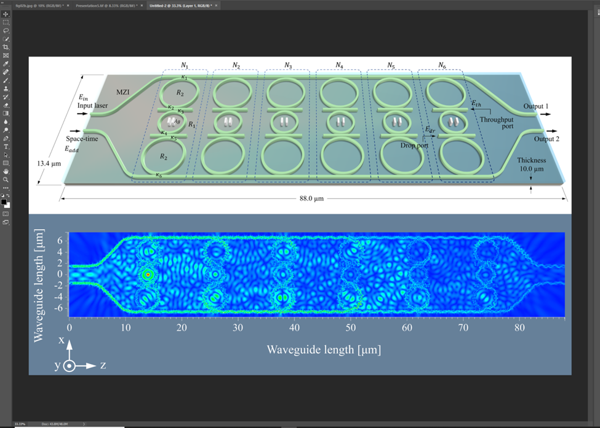The plasmonic circuit has different forms, one of such forms is the one that consists of a silicon micro-ring. The silicon micro-ring has many uses and has been used for various applications by many researchers. Space-time function gives the description of a field that evolves with time and position and its boundaries give rise to singularities. The space-time function control has been used by many researchers for various purposes. The whispering gallery mode (WGM) comes into play when it is a wireless connection and can be applied in light fidelity (LiFi) network while for the cable connection signals are transmitted through cable and can be applied in optic fiber network. WGM generation is an important phenomenon, which results in the product of the micro-ring trapped light in the micro-ring circuit.
Stereo sensors are three-dimensional (3D) sensors. The basic principle of a stereo sensor is that, when two inputs are applied in the sensor system, the final output is the multiplexing of both signals. On this principle, a stereo sensor model is presented using two micro-ring resonators along the center ring, which are mirror images. The system uses the phase difference method given by the Kerr–Vernier effect of the non- linear micro-ring, where the crosstalk and stereo sensor sensitivity are calculated. The system could be applied in double vision problem solving, where the stereo sensor with a silicon micro-ring is designed and simulated for the third eye structure. The 3D imaging is obtained using space and time function control, where the double vision adjustment and vision expansion wave- length are achieved. Here, two input lights are applied at the input ports, and the output is obtained in the center linear wave- guide.
The research team of Professor Preecha Yupapin from Ton Duc Thang University in Vietnam has innovatively proposed a human-like miniature stereo sensor. The relevant research results are published in Chinese Optics Letters Volume 19, Issue 10 (P. Yupapin, et al. Human-like stereo sensors using plasmonic antenna embedded MZI with space–time modulation control [Invited]).
Figure 1 shows that the human-like micro stereo sensors system, where eyes, ears, tongue, nose, body, and brain are applied by six panda rings embedded in a Mach Zehnder interferometer (MZI). The input power is applied to the upper branch of MZI and propagates within the system. The 6 antennas(sensors) are formed by the WGM of the panda rings. The space-time modulation signal is applied to the MZI lower branch. The modulated stereo signals can be configured as the plasmon(electron) spin orientations, which can be identified and applied for quantum codes and quantum consciousness. The Prof. Kanad Ray of Amity University Rajasthan, India, a key member of the research team, proposing the designed system can be applied for brain-device interfacing applications based on optical pumping and successive filtering applications such as quantum consciousness, deep learning, and machine learning.

Fig.1 The human-like micro stereo sensors system, where N1 to N6 are node 1 to node 6 for eye, ear, tongue, body, nose, and brain. R1 and R2 are radii of microring resonators. κ1 to κ4 are coupling coefficients. The optical fields for input, throughput, add, and drop ports are given by Ein, Eth, Eadd, and Edr, respectively.


